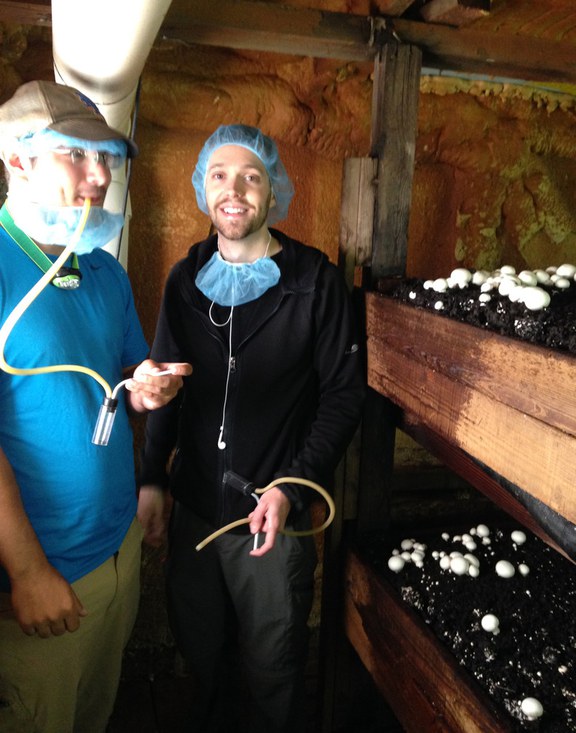Tackling mushroom phorid fly infestations with a multipronged biocontrol approach
Problem
How can crop damages caused by mushroom phorid flies and their irritating infestations of nearby rural developments be reduced without using chemical insecticides?
- Chester County, Pennsylvania, is the locus of the state's sixty-seven mushroom farms that produce 64 percent of domestic mushrooms.
- The EPA banned the most commonly used pesticide for mushroom phorid flies in 2012 after finding it made the fungi toxic to humans.
Findings
Researchers tested two approaches to biologically controlling the reproduction and movement of the pests by establishing a mushroom phorid fly colony--likely the only such experimental colony in the world.
Impact
Biopesticides can provide immediate and future solutions:
- Short-term solutions use pheromones to confuse male flies, preventing them from mating and keeping the population from building up inside mushroom houses.
- Long-term solutions use biopesticides that are already approved for other plants and provide a nontoxic remedy at the source of the flies.
Related Research Areas: Integrated Health, Environmental Resilience, and Advanced Agricultural and Food Systems
Research Credit
Team
Participating Departments
Competitive Funding
- Pennsylvania Department of Agriculture; American Mushroom Institute
Federal and State Appropriations
Emerging Discoveries
Office for Research and Graduate Education
Address
217 Agricultural Administration BuildingUniversity Park, PA 16802-2600
- Email agresearch@psu.edu
- Office 814-865-3136
Office for Research and Graduate Education
Address
217 Agricultural Administration BuildingUniversity Park, PA 16802-2600
- Email agresearch@psu.edu
- Office 814-865-3136





